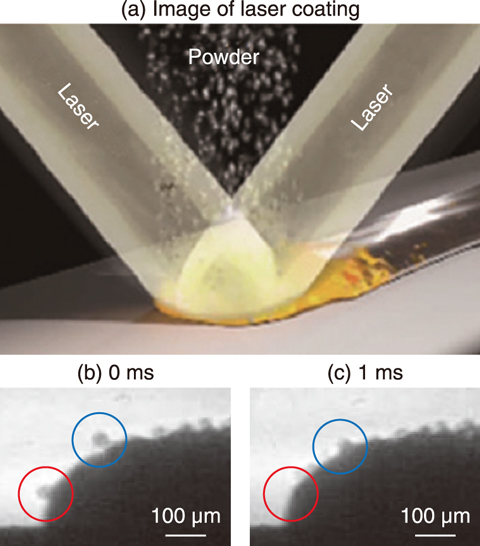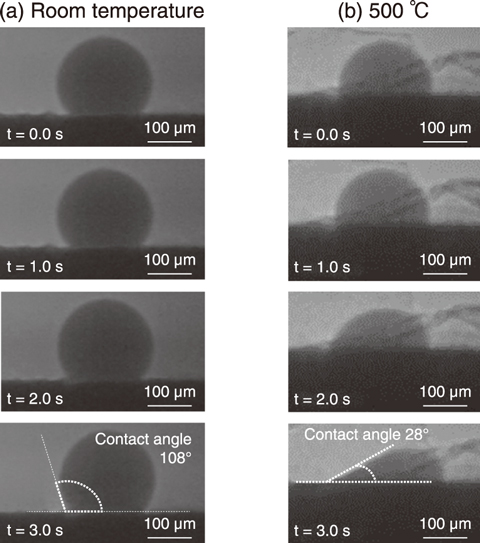
Fig.5-17 (a) Laser coating schematic; state near the tip at (b) 0 and (c) 1 ms as measured by a synchrotron radiation transmitted imaging method

Fig.5-18 State of the titanium powder during laser irradiation
Laser coating is a welding technology that uses a laser to coat dissimilar metals on a metal substrate, making it possible to add characteristics to the metal substrate (e.g., hardness, heat conduction, or electricity conduction). It thus can be expected to contribute to the development of higher-strength, longer-life, lighter-weight, lower-cost, and more energy-efficient next-generation industrial parts and products.
During laser coating, as shown in Fig.5-17(a), the metal powder to be coated is sprayed towards the substrate and changes from a solid to a liquid state when passing through a laser that is obliquely irradiated near the substrate. When this liquid metal powder collides with the substrate or the molten pool formed by liquid metal powder, a metal film is formed on the substrate.
The practical application of laser coating must overcome difficulties such as controlling the coating thickness, reducing defects such as voids, minimizing distortion. To solve these problems, it is necessary to observe in high-time resolution imaging.
In this study, metal spheres were observed to form a film coating during laser coating using synchrotron radiation imaging at BL22XU in SPring-8. A metal powder that was scattered from the sky and received laser irradiation adhered to the vicinity of the coating tip (Fig.5-17(b)). After 1 millisecond, the metal powder was absorbed by the coating film; some metal powder sprayed further from the tip was partially absorbed by the coating film (Fig.5-17(c)). This dependency on position may have been caused by a higher film temperature at the tip, causing more wetting effect.
Fig.5-18 shows the result of in-situ X-ray imaging of a 0.2 mm titanium sphere under laser irradiation. The substrate temperature differed between (a) and (b), although all measurements were performed in a vacuum. The titanium powder placed on the substrate at room temperature showed little change even after laser irradiation for 3 seconds. However, when the temperature of the substrate was 500 ℃, the powder melted and spread over the substrate with time. Thus, a higher substrate temperature leads to the spreading of the metal sphere. Furthermore, the metal powder spray should be located as closely to the tip of the weld for high-quality coating.
This results were obtained using an X-ray visible light conversion unit and a high-speed camera that emphasizes time resolution. Future work will aim to apply these technologies to understand the coating phenomena of various materials and the derivation of optimum conditions, leading to the advancement and practical application of coating technology.